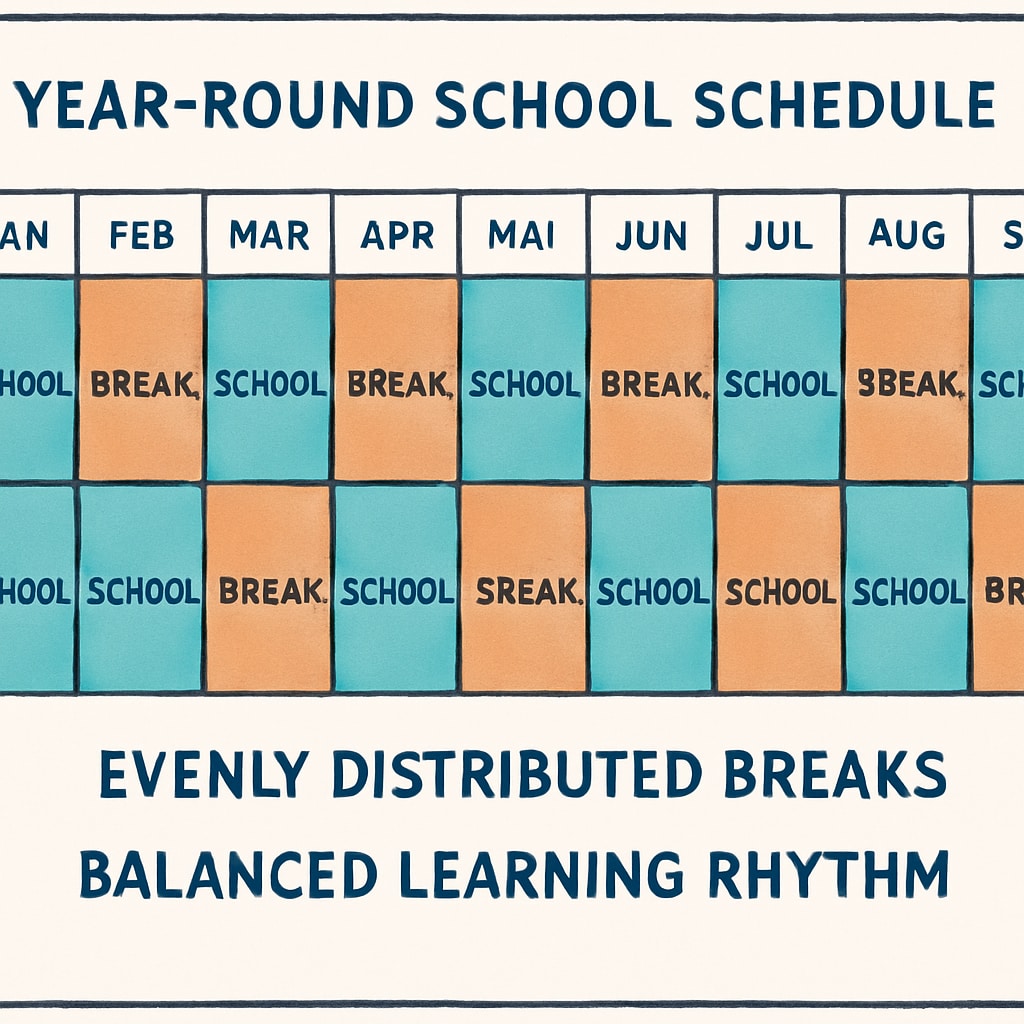The concept of year-round school, replacing traditional long summer vacations with shorter, more frequent breaks, is gaining traction in education discussions. This innovative model directly addresses the issue of “summer learning loss,” where students forget a significant portion of their knowledge during extended breaks. By promoting consistent learning cycles, year-round school offers a balanced rhythm that may enhance knowledge retention and provide students with a more sustainable way to engage with their education.

Breaking Down Summer Learning Loss
Traditional school calendars often feature a lengthy summer break, which contributes to what experts call “summer learning loss.” Studies show that students can lose up to 30% of their reading and math skills during this downtime. Year-round schooling mitigates this problem by replacing the extended summer vacation with shorter, evenly distributed breaks throughout the year. As a result, students have less time to forget learned material, enabling them to retain knowledge more effectively.
Moreover, this model ensures that students stay mentally engaged year-round, reducing the need for extensive review sessions at the beginning of each academic term. Learning loss has been a longstanding challenge in K-12 education, and year-round school offers a proactive solution to this issue.
A Balanced Approach to Learning
Unlike the traditional calendar, year-round schools often adopt a “45-15” or “60-20” schedule. These setups involve 45 or 60 days of instruction followed by 15 or 20 days of break, respectively. This approach creates a consistent learning cycle that reduces burnout while keeping students engaged. In addition, these shorter breaks provide opportunities for students to recharge without losing their academic momentum.
Year-round schooling also allows educators to plan lessons more effectively. The structured breaks enable teachers to revisit key concepts regularly, reinforcing learning and ensuring that students build upon a solid foundation of knowledge. For example, schools implementing year-round schedules report higher academic performance and lower rates of absenteeism, as students find the balanced schedule more manageable.

Additional Benefits Beyond Academia
The advantages of year-round schooling extend beyond academics. For families, shorter breaks can reduce childcare costs and provide opportunities for planned vacations throughout the year. Additionally, consistent learning patterns help students develop better time management and organizational skills, which are crucial for their future success.
Furthermore, year-round school models can alleviate overcrowding in schools. By dividing students into different tracks (rotational schedules), schools can utilize their facilities more efficiently, offering a better learning environment for all. According to Britannica’s education insights, such logistical benefits make year-round schooling a compelling option for districts grappling with resource constraints.
However, this model is not without challenges. Scheduling extracurricular activities and family events may require adjustments, and some communities may resist changing long-standing traditions. Despite these hurdles, the potential benefits of improved knowledge retention and balanced learning schedules make year-round school a promising innovation in education.
Readability guidance: This article uses concise paragraphs, clear transitions, and structured headings to ensure accessibility. The use of lists and external links supports reader engagement while reinforcing credibility. Keywords are distributed evenly to optimize SEO without overloading the text.


